Jurassic World: Dominion is not just built on the dinosaurs that fans have seen before. The sequel will introduce 7 new dinosaur species that actually existed in the past.
Introducing the Dinosaurs Featured in Jurassic World: Dominion
The sequel, Jurassic World: Dominion, will introduce seven new dinosaur species that have never been seen in previous films. Directed by Colin Trevorrow, Dominion will not only conclude the Jurassic World trilogy but also wrap up the story of six films that began with Steven Spielberg’s Jurassic Park in 1993. And now, a completely new prologue for Jurassic World: Dominion featuring 5 minutes of footage has been released.
Set four years after the events of Jurassic World: Fallen Kingdom, Dominion sees humanity forced to coexist with the dinosaurs that have thrived since they were brought to land and released into the wild.
Dominion will also bring back familiar characters such as Dr. Alan Grant (Sam Neill), Dr. Ellie Sattler (Laura Dern), and Dr. Ian Malcolm (Jeff Goldblum), who will meet the main duo of Jurassic World, Owen Grady (Chris Pratt) and Claire Dearing (Bryce Dallas Howard).
Of course, the fan-favorite dinosaurs from the franchise will also return, such as T-Rex, Blue the Velociraptor, and Mosasaurus. But in addition, Jurassic World: Dominion will introduce a range of new and previously unseen dinosaurs, both in the main storyline and in the prologue of Dominion, which takes place 65 million years ago during the Cretaceous period.
The Jurassic World films have introduced the concept of hybrid dinosaurs such as Indominus Rex, Indoraptor, and Scorpios Rex, which were the antagonists in the first two Jurassic World films and in Netflix’s Jurassic World: Camp Cretaceous. However, Jurassic World: Dominion will not feature hybrid creatures; instead, the film will focus on numerous dinosaur species that actually existed (and exist in the film’s universe). Alongside familiar dinosaurs, Jurassic World: Dominion will highlight entirely new prehistoric creatures. Here are all seven newly revealed dinosaur species.
1. Dreadnoughtus
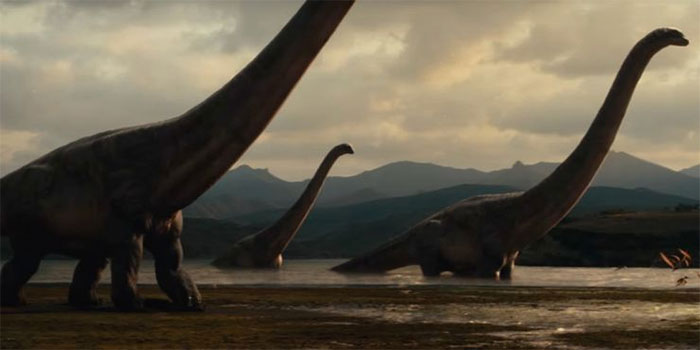
Dreadnoughtus, a genus of giant dinosaur, is one of the largest land animals ever found on Earth, discovered in Argentina. Its name is derived from a battleship that dominated the seas in the early 20th century. This creature measures about 26 meters in length and weighs around 65.4 tons or 59.3 tons.
Seen lumbering through and beside a waterhole in the prologue of Jurassic World: Dominion, Dreadnoughtus is a new giant sauropod similar to Brachiosaurus. The bones of Dreadnoughtus were only discovered in real life in 2005.
2. Quetzalcoatlus
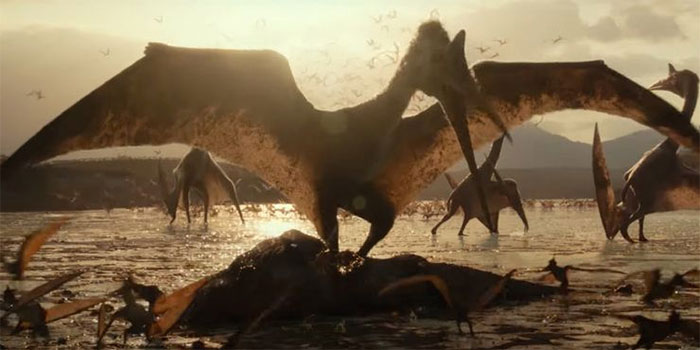
Quetzalcoatlus is a genus of Pterosauria that lived during the late Cretaceous in North America and is the largest flying animal alongside Hatzegopteryx, as both species are of similar size, towering like giraffes when standing upright. Quetzalcoatlus is a member of the Azhdarchidae family, a group of toothless flying reptiles with long necks.
Pteranodons were first introduced in Jurassic Park III and returned in the first two Jurassic World films, but they are not “old enough” to compare with the flying dinosaur Quetzalcoatlus. They are larger and more fearsome than the previously known Pteranodons.
3. Oviraptor
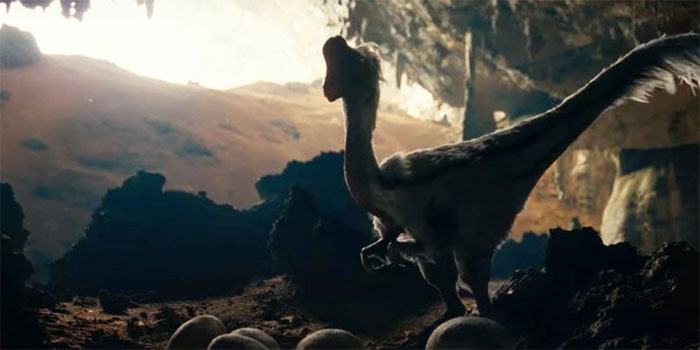
Oviraptor is a genus of small, feathered theropod dinosaurs that lived in Mongolia during the late Cretaceous, about 75 million years ago. This species was first discovered by paleontologist Roy Chapman Andrews and described by Henry Fairfield Osborn in 1924.
Oviraptor is a feathered dinosaur similar to Velociraptor but smaller in size. It is one of the earliest dinosaurs to appear in the Jurassic franchise, as audiences first see it standing over the nest of a larger dinosaur to steal an egg.
4. Nasutoceratops
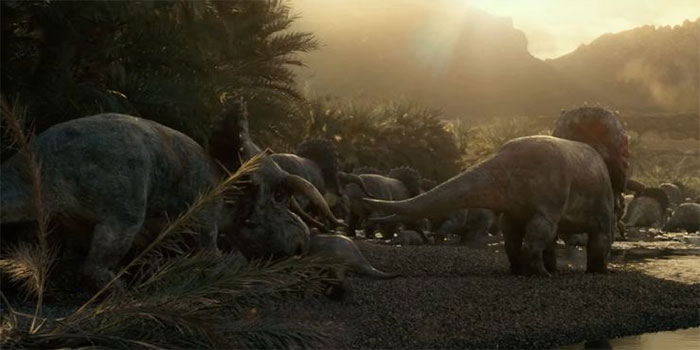
Nasutoceratops is a genus of horned herbivorous dinosaur that lived during the late Cretaceous in what is now Utah, USA. This dinosaur stood about 5 meters tall, had a very large nose, and long horns on its face. The name Nasutoceratops means “big nose, horned face.”
Nasutoceratops has horns similar to Triceratops and Sinoteratops, but this giant dinosaur has a pair of shorter horns extending from below the bony frill on its head. The prologue shows a large herd moving in unison along the edge of a waterhole.
5. Moros Intrepidus
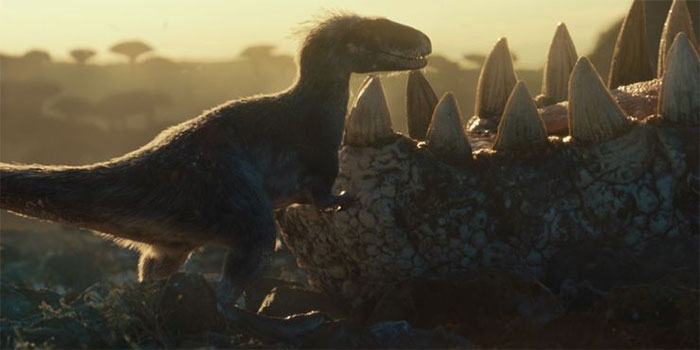
Moros intrepidus is a small theropod species that was only described in February of this year. It is also the earliest ancestor of T. rex, dating back nearly 97 million years to the early Cretaceous in North America, 30 million years earlier than T. rex. It is significantly smaller than its descendants, standing about 1.2 meters tall and weighing over 80 kg, roughly equivalent to a deer. In its time, Moros intrepidus would have been prey for the much larger Allosaurus. The period during which it began to thrive also marks the decline of the famous Allosaurus genus, as “moros” in ancient Greek means “doom.”
6. Iguanodon
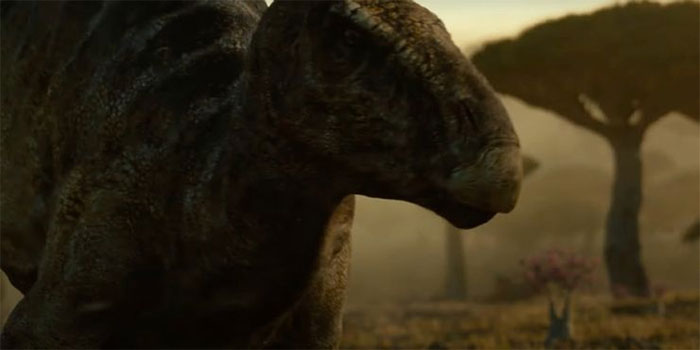
Iguanodon is a genus of Ornithopoda dinosaurs. Iguanodon is a large herbivore that lived during the Cretaceous period, approximately 155.7 to 93.5 million years ago. Fossils of Iguanodon have been found worldwide, from Asia and Europe to America. Its two front limbs have a sharp claw for defense.
7. Gigantosaurus
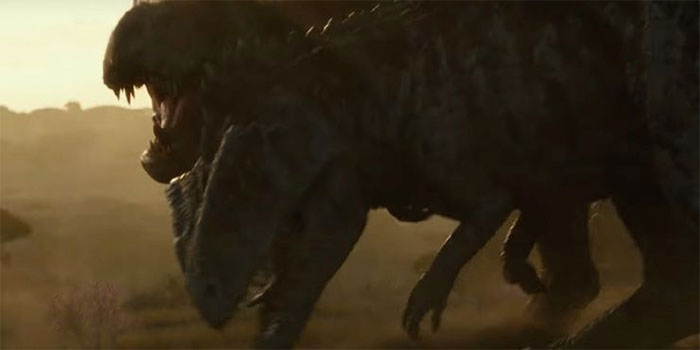
And finally, the star of the show, Jurassic World: Dominion also introduces a new giant predator in the form of Gigantosaurus. This massive carnivore battled T-Rex during the Cretaceous, overpowering the iconic dinosaur in earlier times. And as it appears in the current storyline of Jurassic World: Dominion, it may pose a threat that Alan Grant, Ellie Sattler, Ian Malcolm, Owen Grady, and Claire Dearing will have to face.


















































